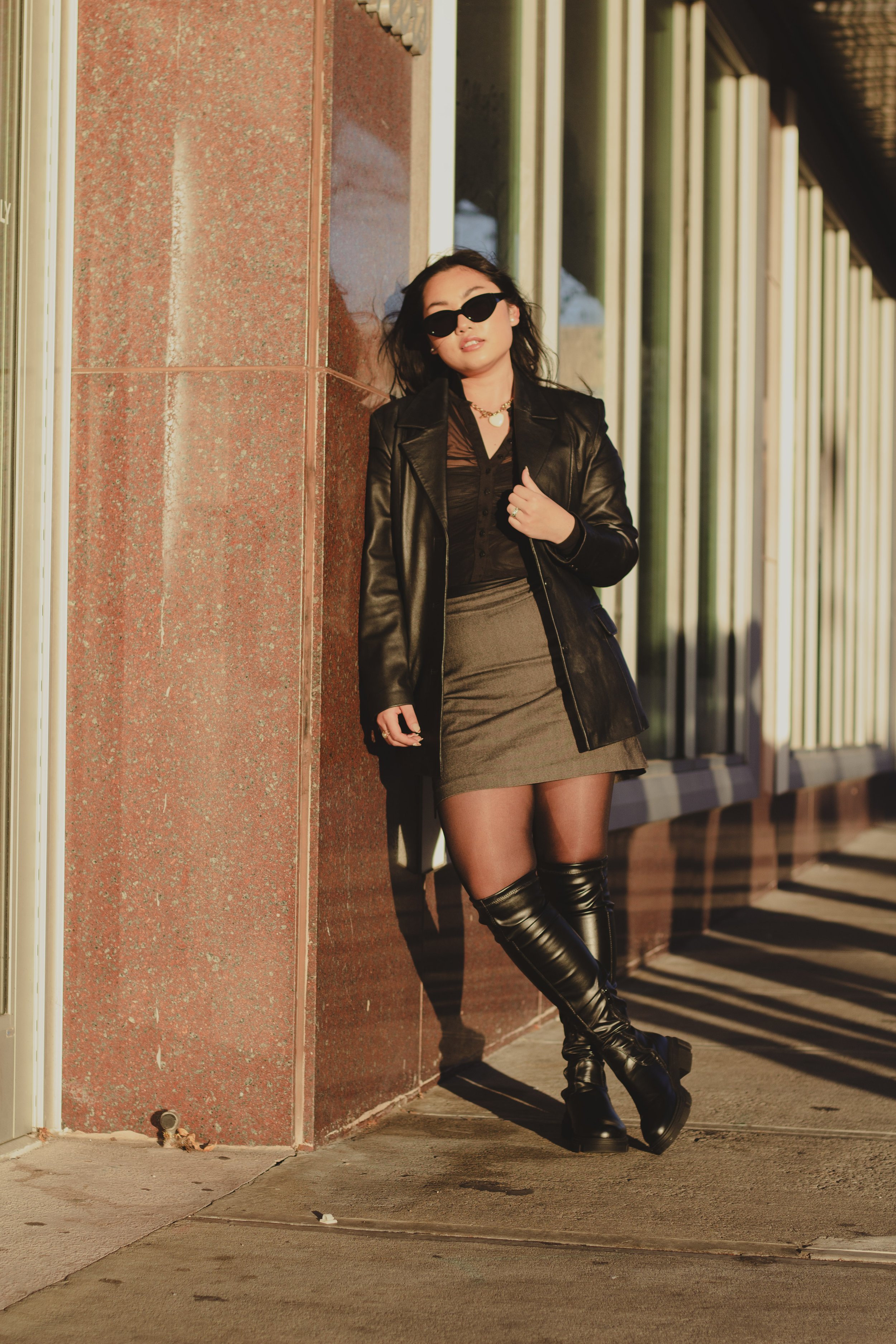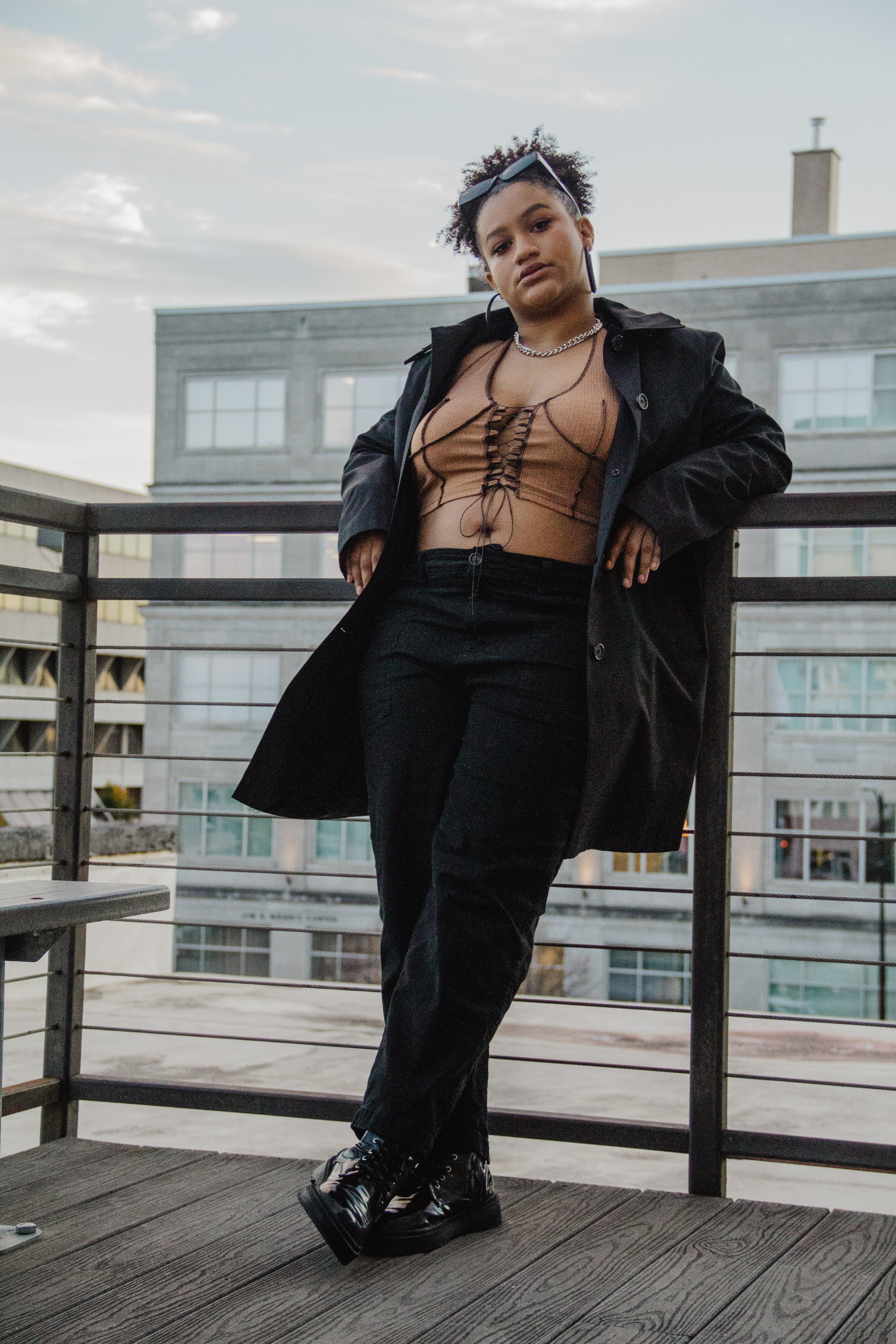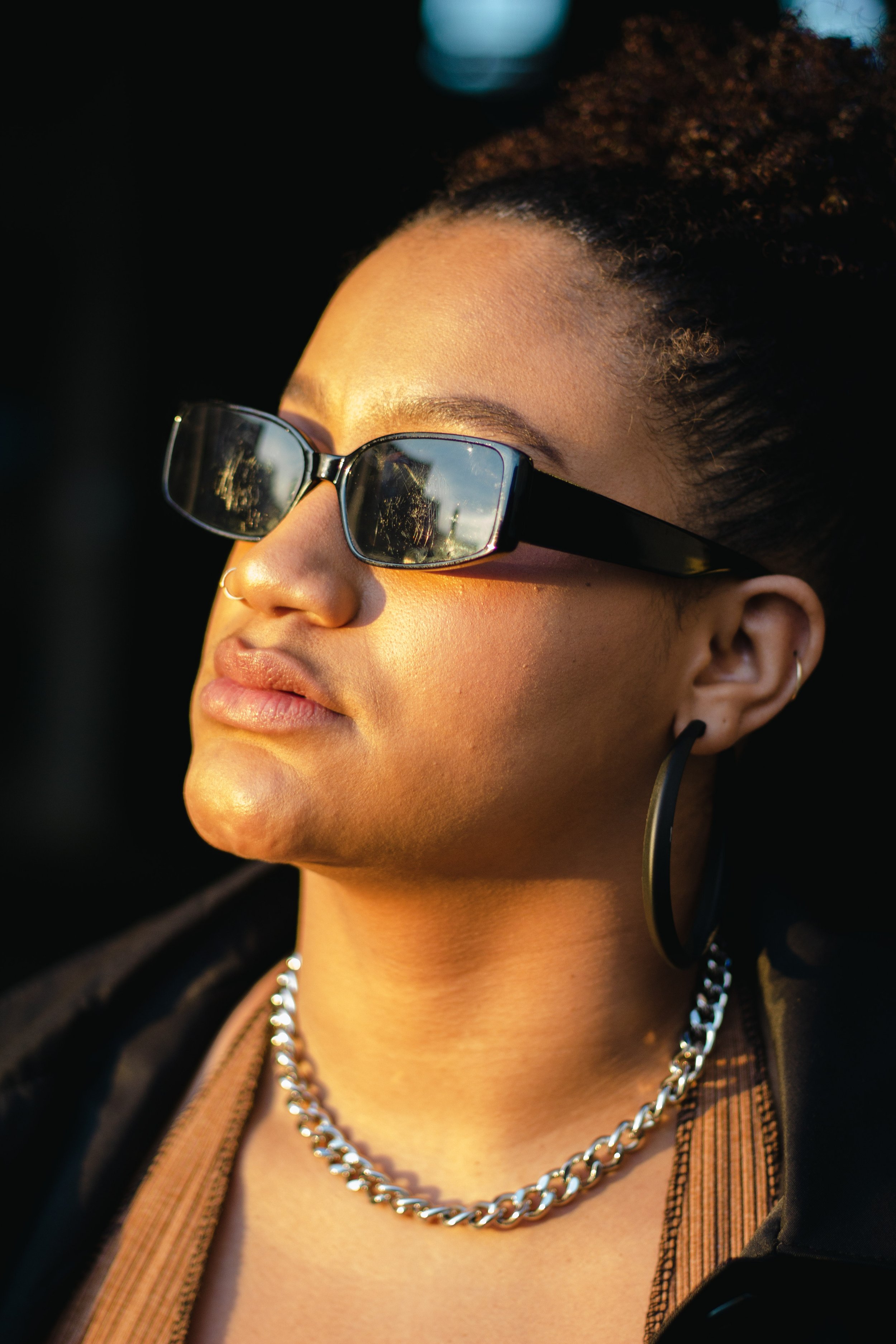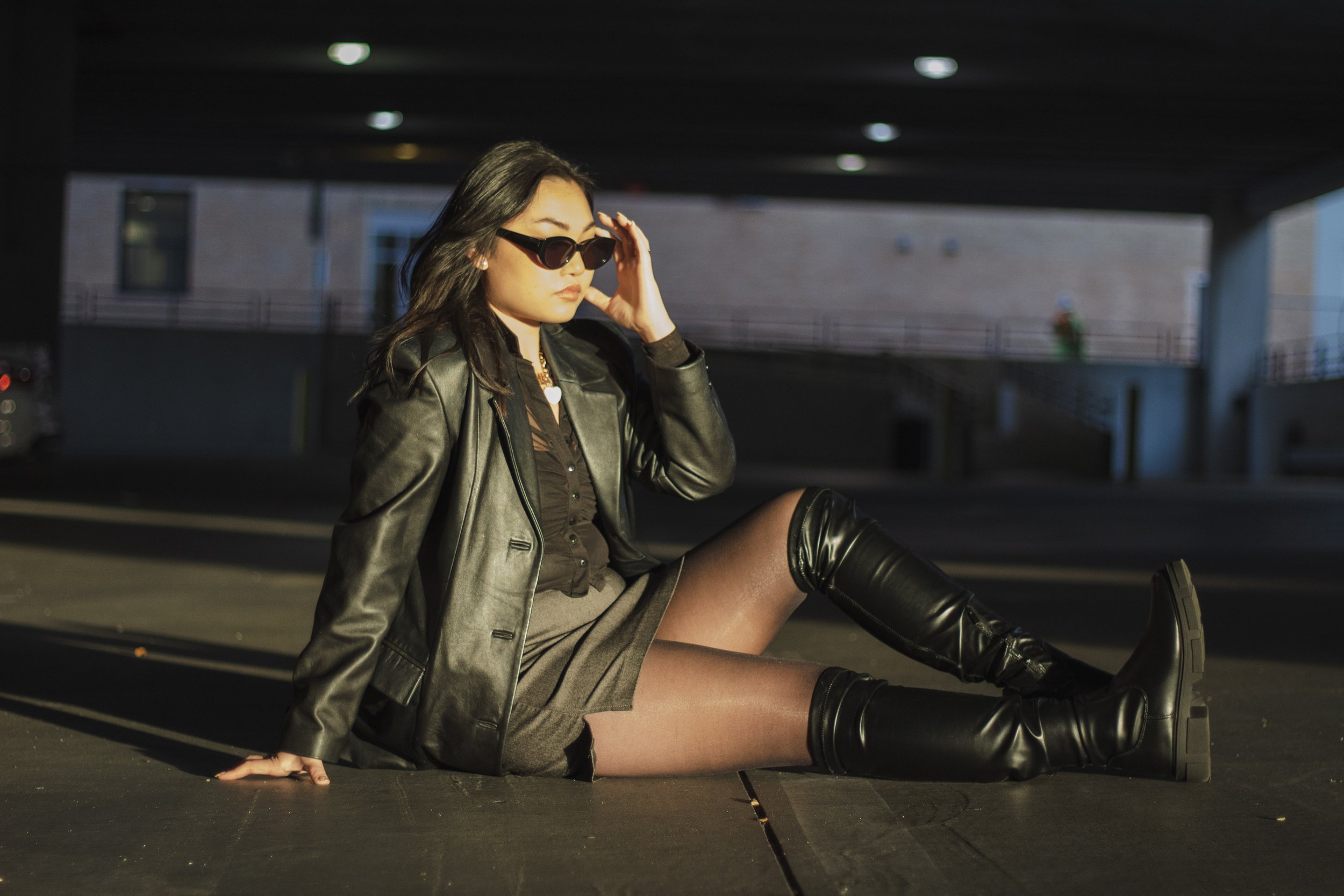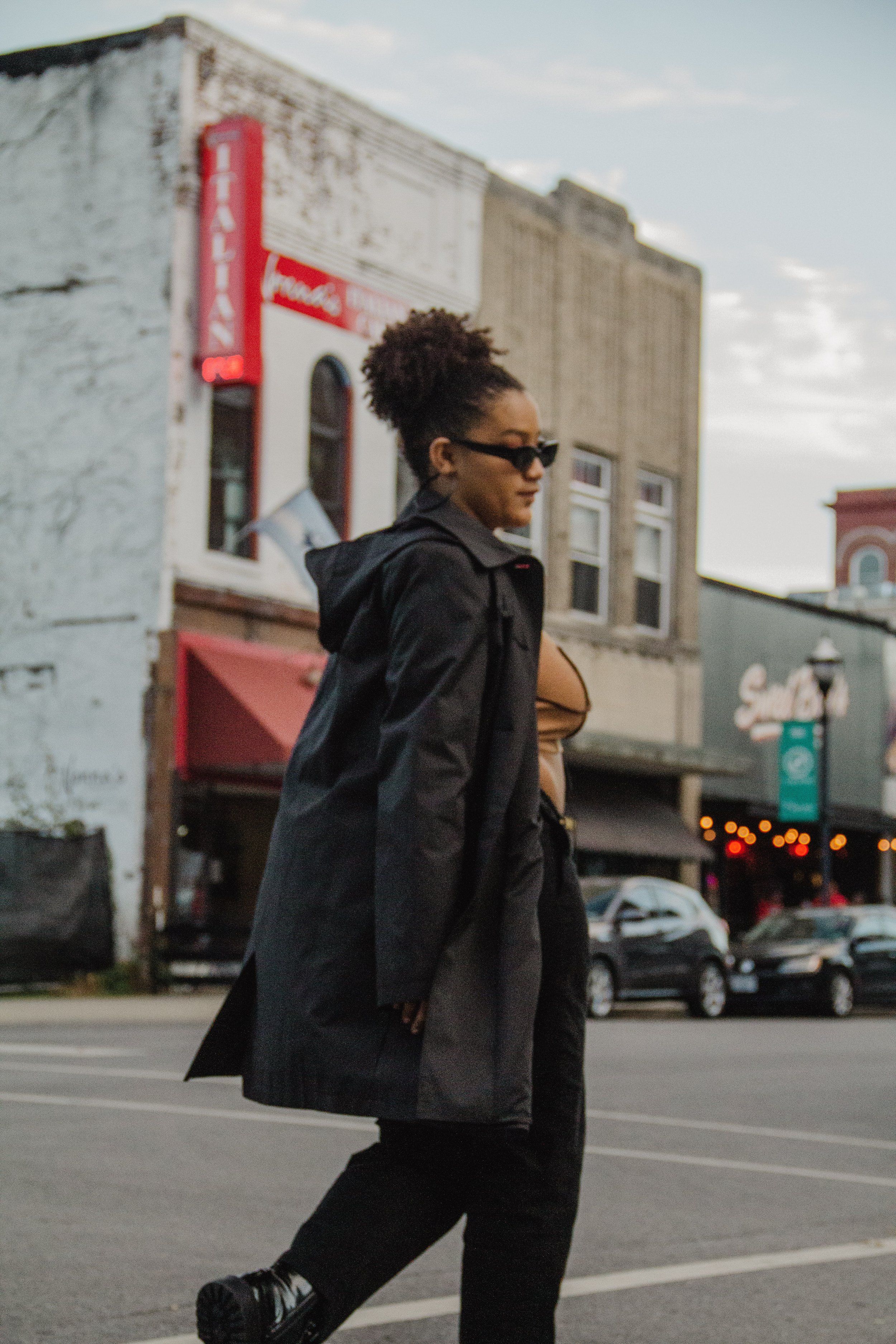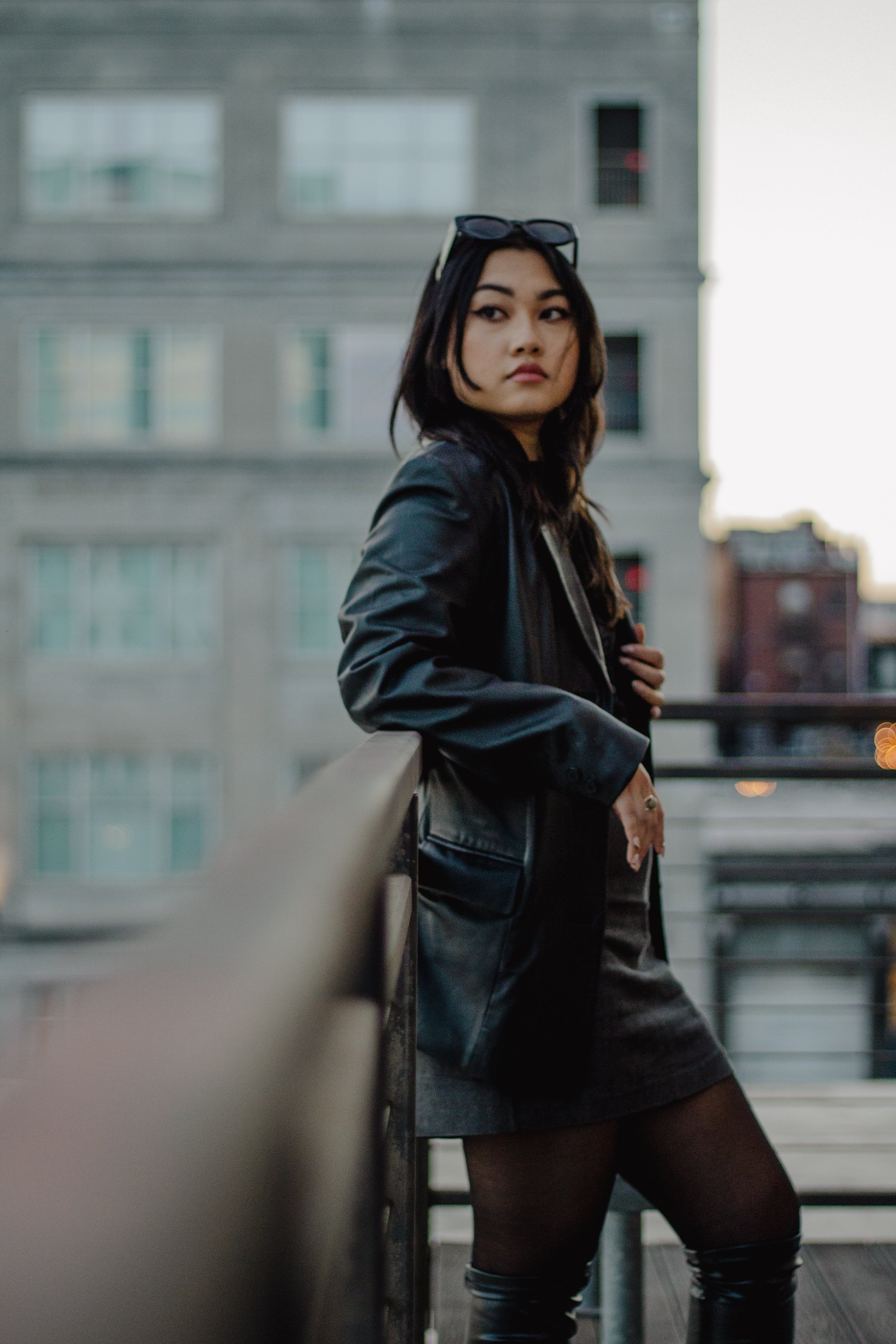The Rise of Streetwear
Written by Mikayla Buneta, photos by Hal Lueking
Models: Madison Clayburn, Kayla Curry
Baggy pants, big shirts, puffer jackets, sneakers and more; these staples made a comeback this year without the 80s calling for them. The resurgence of streetwear should be a reminder that its past comes from an artistic movement we often forget to give credit to. Streetwear is an art crafted within Black culture, and not many are aware of it. The connection between culture and clothing during this era was socially such a success that it made it big in America and across the world to East Asia.
The face of streetwear has changed and elevated itself since its debut in the streets of New York. Crafted for the cold city, the pieces necessary for the environment morphed into urban style. Alongside the expression in music, the clothes worn by Black rappers and influencers were reflected by their fans. The organic exchange of style within a subset elevates the authenticity; the connection between music and culture is plain to see. Sneaker culture was made big by Michael Jordan’s collaboration with Nike, producing the beloved Air Jordans. Oversized jackets ranging from the staple puffer to denim and track style, iconic artists like Biggie Smalls could be caught wearing these and were reflected directly in the community. The artistic drive behind the streetwear movement was ultimately to bring a marginalized group a sense of community and belonging, whilst also going against conformity and fashion traditions.
In East Asian countries, young people had similar culture resets while taking inspiration from America’s hip hop era. Baggy pants made their way into their wardrobes matched with the idol culture of layering and altering silhouettes. Japan fixated on the “foreign” fashion look, which resulted in vintage shops becoming popular. The graphic tee brand “A Bathing Ape” combined with the classic denim and American accessories. Subgroups that branch away from the American ideal of streetwear like Lolita, Kawaii, and Cyberpunk are seen on the streets in a casual light. South Korea’s streetwear is currently overtaken by the “hypebeast” style, inspired by the brands that were the start up in America like Supreme and Nike. This style has reached intercontinentally. Originally from Hong Kong, Kevin Ma’s Hypebeast has been a startup since 2005, supplying East Asia with a source of street culture. .
Today, streetwear has been mixed to adhere to modern trends but still keeps aspects of the 80s originality. Baggy blue jeans exchanged for the sleek black; alongside leather, cargo, or techwear styles. With the power of social media, anyone can recreate the look of streetwear.
All in all, the movement of streetwear shifted the world’s view on fashion as a whole. It broke cultural norms and reshaped the idea of high-end fashion. From music, art, and other expressions intertwined in our society, we can begin to identify societal movements that eventually can be brought together. No matter where you shop, remember the art and culture that was developed for you to wear the clothes you wear.

